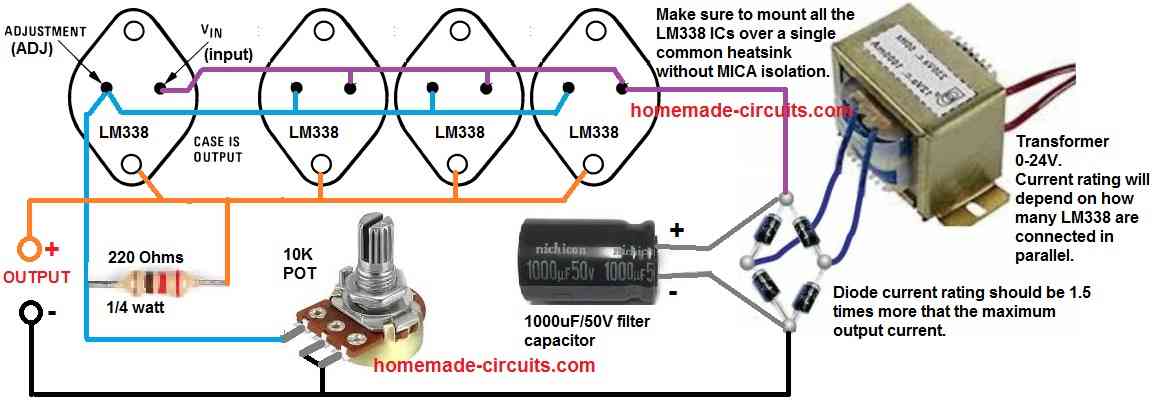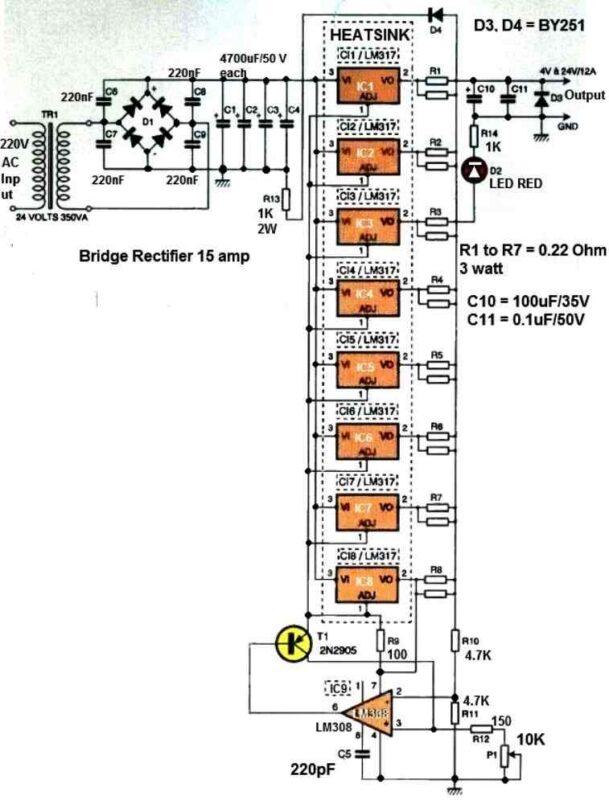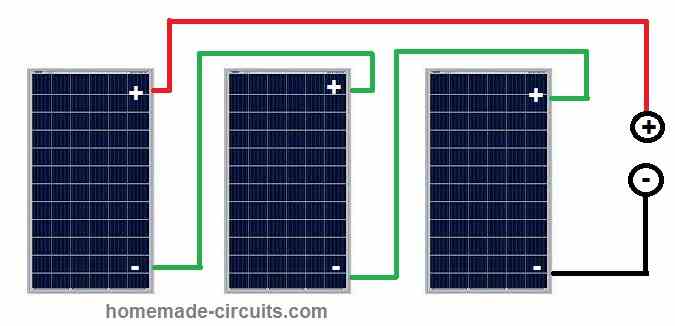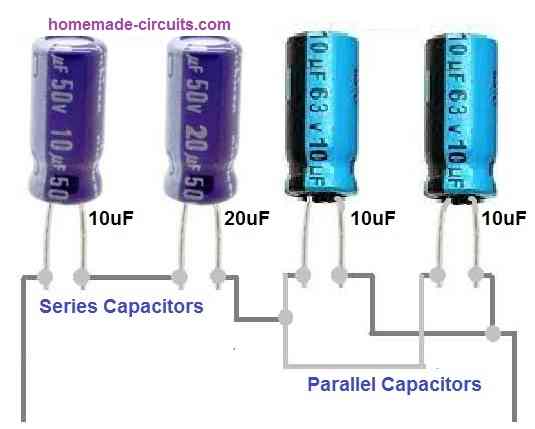So now we are talking about this digital IC called 4035 which is made using CMOS technology, that means it will use very low current and will give us high noise immunity. Inside this IC we have got 4 flip-flops which are arranged in such a way that they can hold and shift 4-bit data. […]
Parallel
How to Connect LM338 IC in Parallel to Increase Output Current
The LM338 is an adjustable 3-terminal positive voltage regulator capable of providing up to 5 amperes of output current. To increase the output current capability, you can connect multiple LM338 ICs in parallel. When you connect them in parallel, each IC will share the load current, allowing you to achieve higher total current handling capacity. […]
12 Amp Power Supply Circuit using Parallel LM317 ICs
This adjustable power supply is capable of delivering a maximum output of 12 A with an adjustable voltage from 4 V to 20 V through many LM317 ICs connected in parallel. It will allow testing of any device requiring a significant power supply, such as a direct current motor, a car amplifier, or even a […]
How to Connect Solar Panels in Series and Parallel
In this post we will study how to connect solar panels in series and parallel and also learn how to calculate solar panels in series and parallel. Before I have explained the connection details, it would be important for us to learn some of the important parameters and specifications related to solar panels. Solar Panel […]
How to Calculate Capacitors in Series and Parallel
Capacitors connected in series or parallel are very common in electronic circuits. This is done in order to achieve the desired capacitance value and also to make the performance of the circuit accurate. In the following post I have explained how to connect capacitors in series and parallel: Connecting Capacitors in Series When we connect […]
How to Connect Resistors in Series and Parallel
There are three ways to interconnect resistors: series, parallel and in combination of series/parallel. When resistors are joined in series, the current passing via one resistor also passes through the next. When resistors are joined in parallel, they are wired across each other, resulting in the same voltage across each resistor. When resistors are connected […]




